LTV, which stands for Lifetime Value, is a crucial metric for mobile app developers and marketers as it helps to measure the long-term value of a customer. In essence, it’s a prediction of the net profit attributed to the entire future relationship with a customer. Understanding LTV is imperative as it enables developers and marketers to evaluate the long-term financial viability of their app, and to budget their acquisition and retention strategies more effectively.
Here’s how LTV can be broken down in the context of a mobile app:
- Monetary Value: This is the revenue generated by a user throughout their interaction with the app. It can come from in-app purchases, subscriptions, ad revenue, and any other monetization strategies employed.
- Engagement Value: Engagement value is about understanding how engaged users are with your app. Highly engaged users are likely to continue using the app and generate revenue over a longer period. Metrics such as session length, frequency of use, and retention rates are crucial for evaluating engagement value.
- Referral Value: If your app has a referral program, the referral value is the worth brought in by a user through new user acquisitions. Happy users who refer others can significantly lower your acquisition costs and increase the LTV.
- Costs: The costs associated with acquiring and retaining a user, including marketing and operational costs, need to be subtracted from the revenue generated to get a clear picture of LTV.
- Retention: The longer a user continues to use your app, the higher their LTV. Retention strategies are crucial to keep users engaged and returning to your app.
Calculating LTV accurately requires a comprehensive understanding of your app’s user behavior, monetization strategies, and operational costs. It also requires a good grasp of data analytics and may necessitate the use of advanced analytics tools and platforms. Moreover, having a background in both IT and marketing is beneficial as it provides a holistic view of both the technical and commercial aspects of LTV, enabling more effective strategies to boost this metric.
Basic Calculation
Suitable for initial LTV estimation, especially for new or small apps with limited data. It divides the total revenue over a period by the number of users in that period.
formula
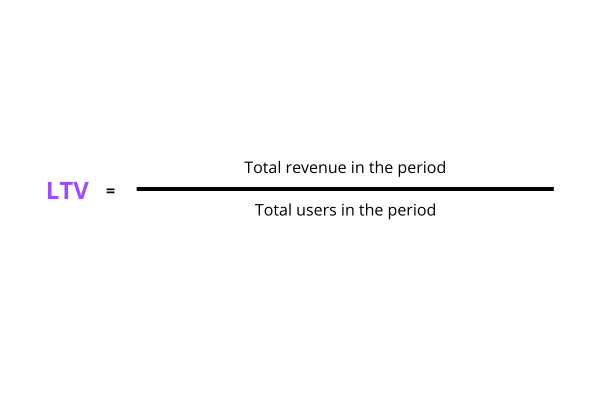
Basic LTV calculator
LTV Calculation Using ARPU and Churn Rate
Suitable for apps with a steady user flow and sufficient data to estimate ARPU and churn rate, providing a more accurate LTV estimation by considering user retention and churn dynamics.
Formula
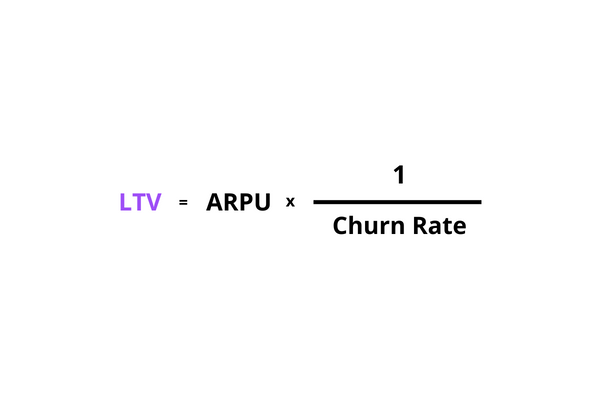
LTV Calculator Using ARPU and Churn Rate
Daily Engagement Calculation
Suitable for apps where user engagement and daily expenses are key factors, like apps with in-game purchases or other daily monetization forms.
Formula
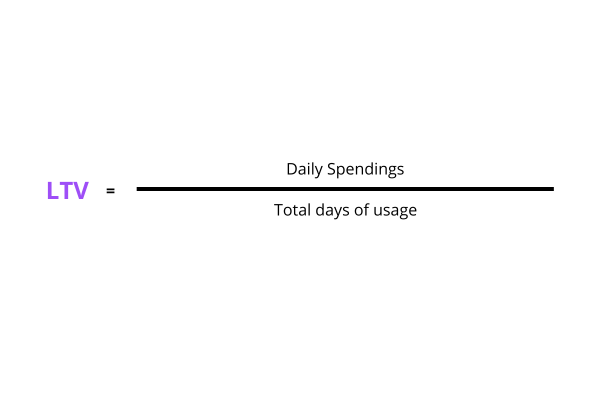
Daily Engagement Calculator
LTV Calculation with Retention Rate
Suitable for apps with high user retention, allowing for long-term user engagement consideration, especially useful for subscription-based monetization models.
Formula
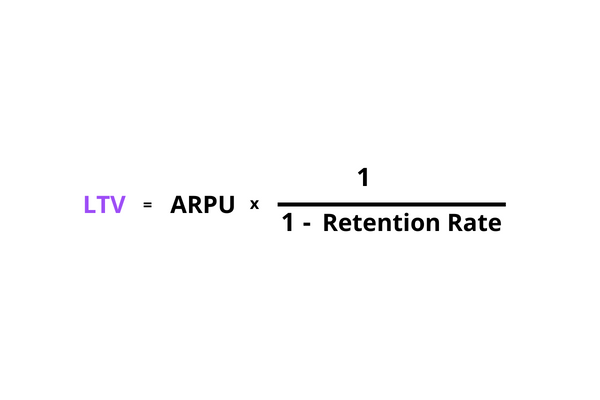
LTV Calculator with Retention Rate
LTV Calculation with Discount Rate
uitable for more complex LTV analysis in mature apps with a large data volume and long-term monetization strategy, considering the time value of money.
Formula
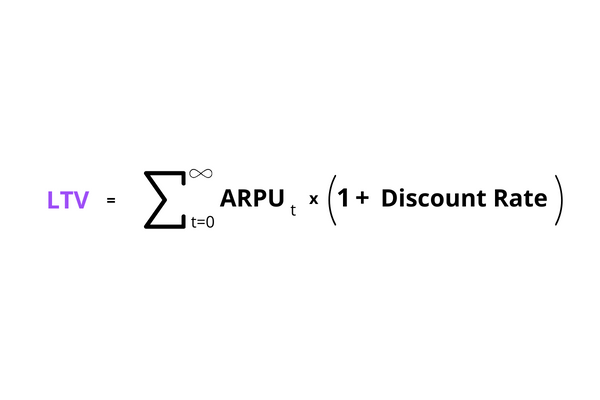
LTV Calculator with Discount Rate
How can you use LTV?
The LTV (Lifetime Value) metric for mobile apps reflects:
- Financial Value: Revenue generated by a user over time, from in-app purchases, subscriptions, ads, etc.
- Marketing Effectiveness: Comparing Customer Acquisition Cost (CAC) and LTV to evaluate marketing campaigns and ROI.
- User Behavior Understanding: Analyzing LTV across user segments or acquisition channels for insights on valuable user groups and appreciated app features. Complete these knowlege with UserX tools, such as session recordings and drop-off flows and get benfits from better UX
- Product and Marketing Optimization: Understanding factors affecting LTV for app feature optimization, marketing strategy enhancement, and user retention improvement.
- Budgeting and Forecasting: LTV aids in budgeting and future revenue forecasting, planning marketing expenses, and product development investments.
- Customer Retention: LTV analysis helps identify customer retention improvement opportunities.
- Growth and Scaling: Knowing LTV helps in making informed decisions regarding scaling marketing and sales efforts to increase the user base and revenue.



